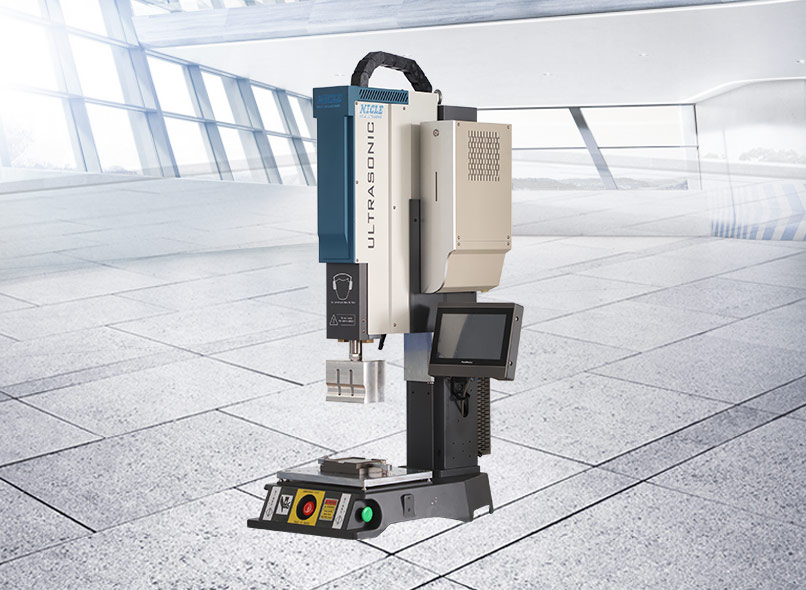Ultrasonic Welding for Plastic Power Boxes: A Comprehensive Guide

In the world of plastic manufacturing, finding efficient and reliable methods for joining components is crucial. Ultrasonic welding has emerged as a popular technique for bonding plastic parts together, offering numerous advantages such as cost-effectiveness, speed, and versatility. This comprehensive guide will delve into the process of ultrasonic welding for plastic power boxes, exploring its applications, equipment, best practices, troubleshooting, safety considerations, and future trends.
What is Ultrasonic Welding?
Ultrasonic welding is a process that utilizes high-frequency vibrations to create a strong bond between plastic components. The vibrations, typically ranging from 15 to 75 kHz, generate frictional heat at the interface of the parts, causing them to melt and fuse together. This method is widely used in various industries, including medical devices, automotive, electronics, and consumer goods.
The Process of Ultrasonic Welding
Step 1: Preparation
Before initiating the ultrasonic welding process, proper preparation is essential. The plastic parts to be welded need to be clean, free from contaminants, and accurately positioned in the welding fixture. Surface finish and material compatibility should also be considered to ensure optimal bond strength.
Step 2: Applying Pressure
To create a strong and reliable bond, pressure must be applied to hold the parts firmly together during the welding process. This pressure is typically achieved using an actuator or pneumatic piston, exerting force on the horn or sonotrode, which transmits the vibrations to the parts.
Step 3: Ultrasonic Vibration
The heart of the ultrasonic welding process lies in the generation of high-frequency vibrations. A power supply converts low-frequency electricity into high-frequency electrical energy, typically ranging from 20 to 40 kHz. This electrical energy is then transformed into mechanical vibrations by a transducer or converter.
Step 4: Bond Formation
As the vibrations are transmitted through the horn or sonotrode, they create friction at the interface between the plastic parts. This frictional heat quickly raises the temperature at the contact points, causing the plastic to melt and form a bond. The amplitude and frequency of the vibrations, as well as the applied pressure, play crucial roles in achieving a reliable weld.
Step 5: Cooling and Solidification
After the desired bond is formed, the ultrasonic vibrations cease, and the molten plastic begins to cool and solidify. This cooling process is crucial for ensuring the integrity and strength of the weld. Once the plastic has solidified, the pressure is released, and the welded assembly can be removed from the fixture.
Advantages and Applications of Ultrasonic Welding
Versatility and Cost-effectiveness
Ultrasonic welding offers several advantages over traditional joining methods. It is a versatile process that can be used to weld a wide range of thermoplastic materials, including ABS, PVC, PET, and polycarbonate. Additionally, ultrasonic welding eliminates the need for additional consumables such as adhesives or fasteners, resulting in cost savings and improved production efficiency.
Medical Device Manufacturing
In the medical industry, where precision and reliability are paramount, ultrasonic welding plays a crucial role in the assembly of medical devices. It is commonly used for joining components of surgical instruments, catheters, valves, filters, and face masks. The hermetic seals achieved through ultrasonic welding ensure the integrity of medical devices, preventing contamination and ensuring patient safety.
Automotive Industry
The automotive industry relies on ultrasonic welding for various applications, including the assembly of power distribution boxes, sensor housings, interior trim components, and lighting systems. Ultrasonic welding provides a fast and efficient method for joining plastic parts, contributing to the overall durability and reliability of automotive components.
Electronics and Consumer Goods
The electronics and consumer goods sectors benefit greatly from the use of ultrasonic welding. This method enables the assembly of electronic components, such as connectors, switches, and circuit boards, with high precision and reliability. Additionally, ultrasonic welding is widely utilized in the production of consumer goods, including toys, appliances, packaging, and household products.
Factors Affecting Ultrasonic Welding
Several factors influence the success and quality of ultrasonic welding. Understanding and optimizing these factors are crucial for achieving consistent and reliable welds.
Frequency of Sound Waves
The frequency of the ultrasonic vibrations used in welding can vary between 15 and 75 kHz. The choice of frequency depends on factors such as material type, thickness, and required bond strength. Higher frequencies are generally used for delicate or thin materials, while lower frequencies are suitable for thicker or stiffer plastics.
Pressure and Force
Applying the right amount of pressure during ultrasonic welding is crucial for achieving a strong and reliable bond. The pressure must be sufficient to hold the parts together firmly but not excessive enough to cause deformation or damage. The force applied can vary depending on the specific application and material characteristics.
Welding Time
The duration of the ultrasonic welding process, also known as the weld time, is a critical parameter. It determines the amount of energy transferred to the plastic parts and affects the bond strength. Weld times can range from fractions of a second to several seconds, depending on the material, part design, and desired weld quality.
Material Compatibility
The choice of materials for ultrasonic welding is essential for ensuring a successful bond. Thermoplastic materials, which can be melted and re-solidified multiple times, are most suitable for ultrasonic welding. However, not all thermoplastics are compatible, and factors such as melting temperature, viscosity, and chemical composition should be considered.
Ultrasonic Welding Equipment
To perform ultrasonic welding, specialized equipment is required. The key components of an ultrasonic welding machine include the power supply, transducer or converter, booster and horn, anvil or fixture, and force application mechanism.
Power Supply
The power supply converts low-frequency electrical energy into high-frequency energy, typically ranging from 20 to 40 kHz. It provides the electrical input necessary for the transducer to generate mechanical vibrations.
Transducer or Converter
The transducer, also known as the converter, is responsible for transforming the high-frequency electrical energy from the power supply into mechanical vibrations. It utilizes piezoelectric ceramic discs that expand and contract rapidly, creating the vibrations needed for welding.
Booster and Horn
The booster and horn work together to amplify and focus the mechanical vibrations generated by the transducer. The booster increases or decreases the amplitude of the vibrations, while the horn delivers the vibrations to the parts being welded. The design and geometry of the booster and horn play a crucial role in optimizing the weld process.
Anvil and Force Application
The anvil or fixture serves as the base upon which the plastic parts are stacked and held during welding. It provides stability and support to ensure precise alignment and contact between the parts. Force application mechanisms, such as pneumatic pistons, apply pressure to hold the parts together during the welding process.
Best Practices for Ultrasonic Welding
To achieve successful ultrasonic welds, several best practices should be followed. These practices ensure optimal weld quality, reliability, and efficiency.
Material Preparation
Before initiating the welding process, proper material preparation is crucial. The parts to be welded should be clean, free from contaminants, and properly aligned in the fixture. Any surface finishes or coatings should be considered to ensure optimal bond strength.
Proper Alignment and Clamping
Accurate alignment and clamping of the parts are essential for successful ultrasonic welding. Proper alignment ensures that the vibrations are transmitted evenly across the joint, resulting in a uniform and reliable bond. Clamping mechanisms should securely hold the parts together without causing deformation or damage.
Optimizing Weld Parameters
Ultrasonic welding parameters, including frequency, pressure, and weld time, should be optimized for each specific application. The material type, thickness, and desired bond strength should be considered when determining the ideal parameters. Experimentation and testing may be necessary to achieve the desired results.
Quality Control and Testing
To ensure the integrity and reliability of ultrasonic welds, quality control measures should be implemented. Regular inspections and testing should be conducted to verify the strength and integrity of the welds. Non-destructive testing methods, such as visual inspection, pull testing, and ultrasonic inspection, can be employed to assess the quality of the welds.
Troubleshooting Common Issues in Ultrasonic Welding
Despite its many advantages, ultrasonic welding may encounter certain issues during the welding process. Understanding these issues and implementing appropriate troubleshooting measures can help overcome challenges and achieve consistent weld quality.
Insufficient Weld Strength
Inadequate bond strength can be caused by factors such as improper material preparation, insufficient pressure or force, incorrect weld parameters, or material incompatibility. Adjusting these factors, optimizing the welding process, or considering alternative materials can help improve the weld strength.
Flashing or Excessive Material Deformation
Flashing, the formation of excess melted material around the weld area, or excessive material deformation can occur due to excessive pressure, improper alignment, or incorrect weld parameters. Adjusting the pressure, ensuring proper alignment, or optimizing the weld parameters can help mitigate these issues.
Inconsistent Weld Quality
Inconsistent weld quality may result from variations in material thickness, improper alignment, insufficient pressure, or inconsistent weld parameters. Maintaining consistent material thickness, ensuring precise alignment, applying sufficient pressure, and optimizing weld parameters can help achieve consistent weld quality.
Equipment Malfunctions
Equipment malfunctions, such as power supply issues, transducer failure, or horn damage, can disrupt the ultrasonic welding process. Regular maintenance, calibration, and inspection of the equipment are essential to minimize the risk of malfunctions. Prompt troubleshooting and repair should be carried out in case of any equipment issues.
Safety Considerations in Ultrasonic Welding
Ultrasonic welding involves various safety considerations to protect operators and ensure a safe working environment.
Noise and Hearing Protection
Ultrasonic welding generates high-frequency vibrations that produce noise levels above the safe threshold for human hearing. Adequate hearing protection, such as earplugs or earmuffs, should be worn by operators to prevent hearing damage.
Vibrational Hazards
The vibrations generated during ultrasonic welding can transmit through the work surface and cause hand-arm vibration syndrome (HAVS) in operators. Regular breaks, proper ergonomics, and the use of vibration-damping tools and workstations can help minimize the risk of vibrational hazards.
Electrical Safety
Ultrasonic welding equipment operates with high voltages and electrical currents. Proper grounding, insulation, and maintenance of the equipment are essential to prevent electrical shocks and other electrical hazards. Operators should be trained in electrical safety protocols and procedures.
Future Trends and Innovations in Ultrasonic Welding
As technology advances, ultrasonic welding continues to evolve with new trends and innovations.
Advanced Control Systems
Advanced control systems, including real-time monitoring, feedback control, and adaptive algorithms, are being developed to enhance the precision and reliability of ultrasonic welding. These systems allow for continuous monitoring of weld parameters and adjustments in real-time, ensuring optimal weld quality.
Intelligent Weld Monitoring
Intelligent weld monitoring systems, utilizing sensors and artificial intelligence, are being developed to detect and analyze weld defects or inconsistencies. These systems provide valuable data for process optimization, quality control, and predictive maintenance.
Hybrid Joining Technologies
Hybrid joining technologies, combining ultrasonic welding with other techniques such as laser welding or adhesive bonding, are being explored to enhance the strength and versatility of weld joints. These hybrid approaches offer the potential for superior bond strength and increased design flexibility.
Case Studies: Ultrasonic Welding in Plastic Power Box Manufacturing
To showcase the practical applications of ultrasonic welding in plastic power box manufacturing, we will explore three case studies.
Case Study 1: Power Box for Medical Devices
In the medical device industry, ultrasonic welding is extensively used to manufacture power boxes for various medical devices. The ultrasonic welding process ensures hermetic seals, preventing contamination and ensuring the reliability of the power supply. The precise control and high repeatability of ultrasonic welding make it an ideal choice for critical medical applications.
Case Study 2: Automotive Power Distribution Box
The automotive industry relies on ultrasonic welding to assemble power distribution boxes used in vehicles. Ultrasonic welding provides a fast and efficient method for joining plastic components, ensuring the durability and reliability of the power distribution system. The ability to weld dissimilar materials and complex geometries makes ultrasonic welding a preferred choice for automotive applications.
Case Study 3: Consumer Electronics Power Box
Consumer electronics companies utilize ultrasonic welding to assemble power boxes for various devices such as smartphones, laptops, and gaming consoles. The precise and consistent weld quality achieved through ultrasonic welding ensures the integrity and safety of the power supply. The fast cycle times and cost-effectiveness of ultrasonic welding make it an attractive choice for high-volume consumer electronics production.
Conclusion
Ultrasonic welding is a versatile and cost-effective method for joining plastic components, offering numerous advantages across various industries. This comprehensive guide has provided an in-depth understanding of the ultrasonic welding process, its applications, equipment, best practices, troubleshooting, safety considerations, and future trends. By harnessing the power of high-frequency vibrations, ultrasonic welding enables the efficient and reliable production of plastic power boxes, contributing to the advancement of technology and manufacturing.
See more ultrasonic welding components





